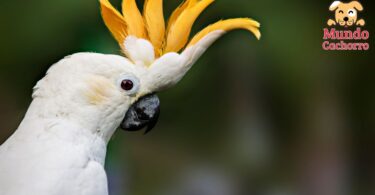Recent scientific research has revealed that Argentine parrots that migrated to Europe have developed local dialects. Given the striking nature of the case, scientists have initiated a detailed study on the forms of communication of these birds. It is important to note that Argentine parrots are known for their mostly green plumage with yellow and blue highlights, as well as a grayish chest, and are recognized for their remarkable adaptability. It is estimated that they have evolved to develop several dialects that vary between countries and cities, demonstrating their ability to imitate sounds and voices. This particular ability has allowed them to integrate into different environments and generate unique linguistic variations.
Indice
Parrots learning local dialects
The research underlines that this phenomenon of learning local dialects among Argentine parrots highlights their amazing adaptability and learning ability. In some places, these birds have adopted linguistic patterns specific to the region. Specifically, the research was carried out by the Max Planck Institute for Animal Behavior. It provided valuable information on this phenomenon.
Monk parakeets exhibit an extremely flexible vocal repertoire, allowing them to imitate and learn new sounds throughout their lives. The comparison carried out by scientists from the Max Planck Institute for Animal Behavior and the Max Planck Institute for Evolutionary Anthropology has provided detailed information on the linguistics of these birds.
“Like humans, Argentine parrots in Europe have unique ways of communicating depending on where they live,” explained Stephen Tyndel, a student at the Max Planck Institute for Animal Behavior. Although Europe has no native birds, several species, including the monk parrot, became established after escaping the pet trade. Tyndel pointed out that Argentine parrots are an ideal subject to study the evolution of complex communication in a species other than humans.
Research in eight cities
Researchers conducted an analysis and registration of Argentine parrots in eight cities around the world, including Spain, Belgium, Italy and Greece. Using an innovative statistical method, the experts were able to show that the calls of the parrots varied significantly from city to city. “We wanted to determine not only the existence of different dialects, but also the geographic scale on which they are found,” said the researcher.
The results revealed that, in fact, the parrots presented different dialects in each city. For example, in Brussels, contact calls differed markedly from those in other cities. For the most part, dialects were distinguished by the frequency modulation structure within each call, being hardly perceptible to humans.
Throughout the research, it was observed that there was only one dialect per city instead of several, as expected. Tyndel indicated that this suggests that the dialects diverged early when the birds invaded European cities and then did not undergo significant changes during this period.
Although Argentine parrots live in groups, Simeon Smeele, a scientist affiliated with the Max Planck Institute for Animal Behavior, raised the possibility that dialects could be used as a way of communicating nest group membership, acting as a kind of password.
Although the ways in which Argentine parrots communicate are complex, experts hope to discover even more information about their various dialects in future research.
Image courtesy of https://pixabay.com, all rights reserved.







